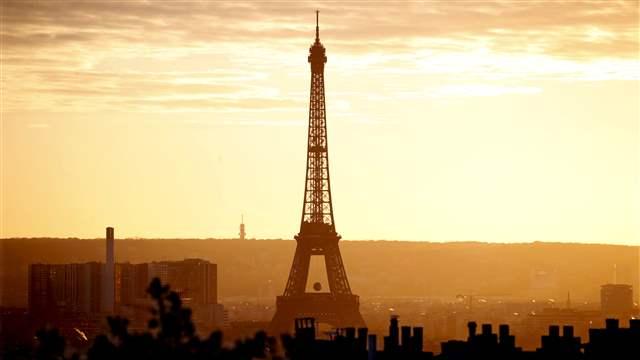Every day, we are pumping more fossil pollutants into our planet and overshooting the planet’s ability to absorb them. But 2015 has been a promising year for climate change, and we are beginning to see some positive change.
In his new brief, Brookings Nonresident Senior Fellow Timmons Roberts outlines several issues that still loom for climate change combatants and factors that will aide them in establishing a Paris Agreement. For example, even though it has been a positive year for climate change, and there is an increased commitment by countries through new pledges, the pledges are still inadequate. They do not add up to enough reductions, and we are still on the path to “3.5 degrees Celsius, 3.1 C, or 2.7 C,” which is above the agreed safety limit of 2 degrees Celsius beyond which the risks of climate change become unacceptably high.

The Eiffel Tower is seen at sunset in Paris, France (REUTERS/Charles Platiau)
Read the related paper (PDF) »
Reflecting on the disappointing 2009 Copenhagen climate talks, Roberts explains four new tailwinds that may bring about success in Paris. Those include the increased perceptibility that climate change is happening around us; in the U.S., the economy, specifically the use of some stimulus funds toward efficiency and lower-carbon approaches; the plunge in the cost of renewable energy causing a shift away from fossil fuels; and the pope’s campaign to view climate change a moral and religious issue.
We are still on track to overshoot the limits of our planet’s ability to absorb the fossil pollutants we are pumping into it. But substantial progress is being made, and denying that would be counterproductive to the important cooperation that has occurred.
Roberts says that this year’s negotiations have to be different from negotiations in the past, “since Paris is a crucial deadline to seal a deal.” However, Roberts states that, “we cannot expect the COP21 negotiations in Paris to resolve everything, and it won’t.” There are still some key parts of the agreement that are facing challenges, like how the $100 billion pledge in climate finance will be fairly apportioned. In addition, a lot of work will need to be done after Paris to get the world under 2 C or 1.5 C of warming.
Read
COP21 at Paris: What to expect – The issues, the actors, and the road ahead on climate change
, and why there is good reason to hope that COP21 will provide the necessary kick-start to boost and continue progress through 2016 and beyond.
Christina Golubski contributed to this post.



Commentary
As COP21 approaches, a transformative end of the year for climate change
November 23, 2015